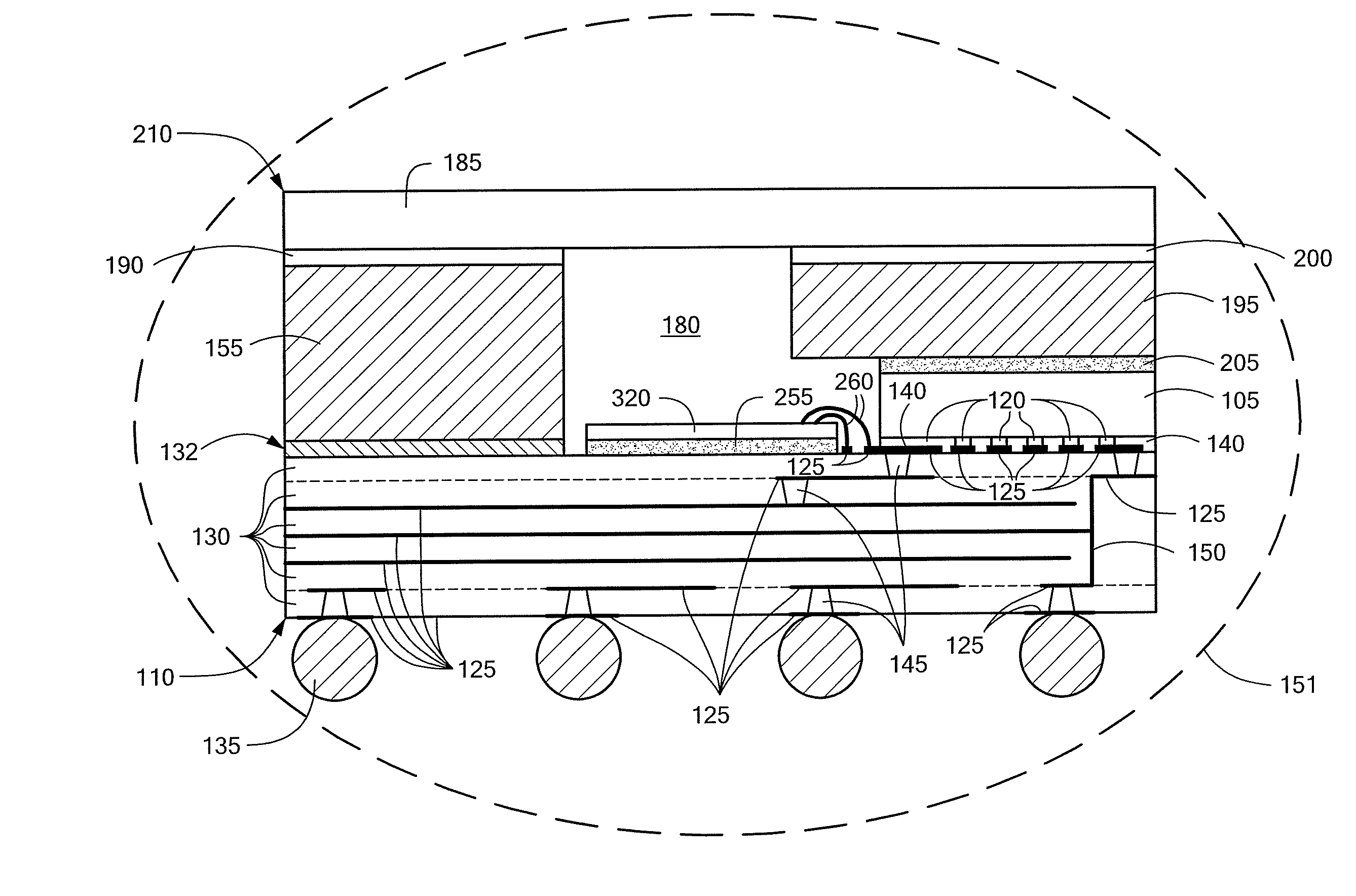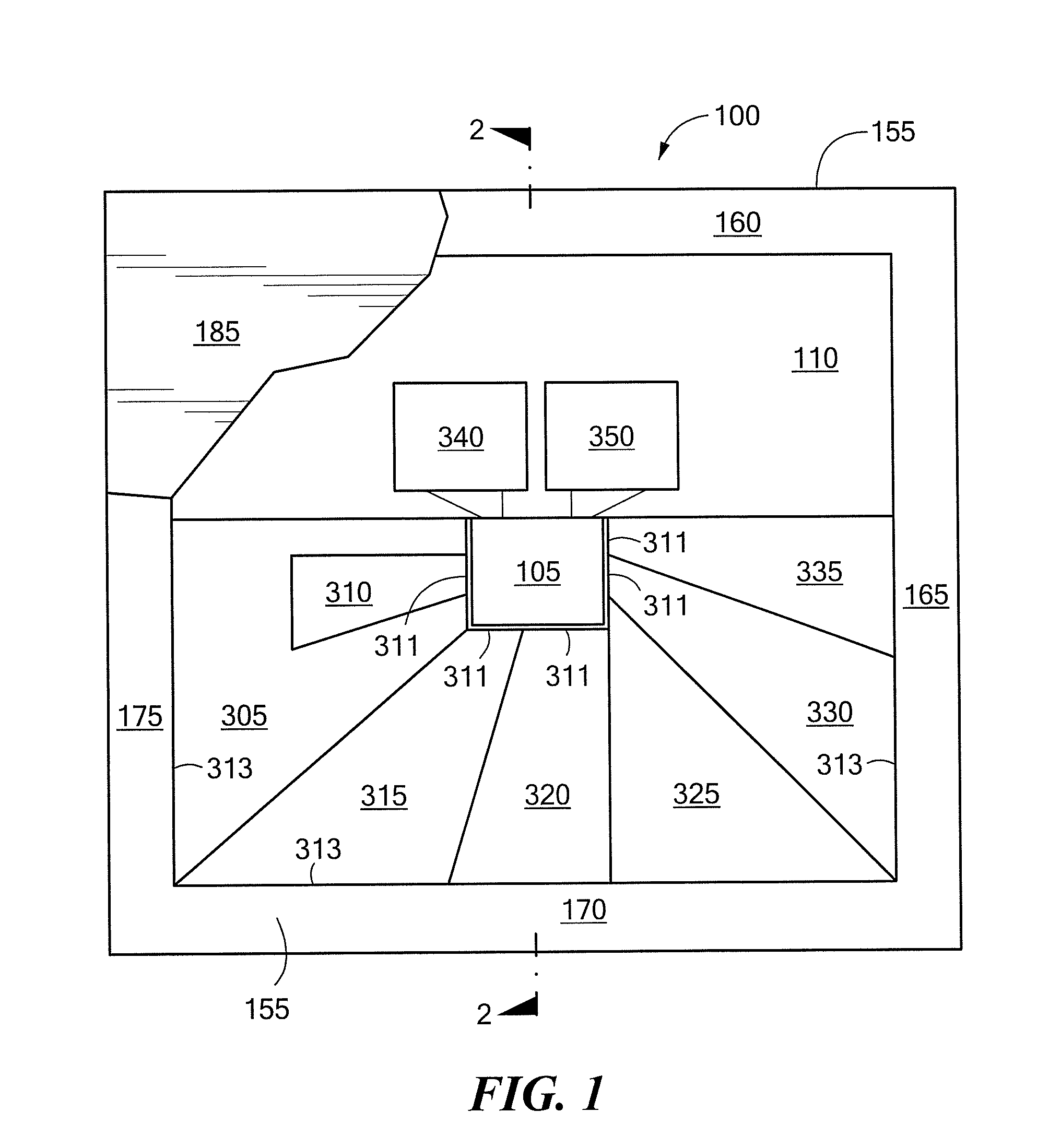Low noise high thermal conductivity mixed signal package
a high-temperature, mixed-signal technology, applied in the direction of semiconductor devices, semiconductor/solid-state device details, electrical apparatus, etc., can solve the problems of capacitor interaction with parasitic or self-inductance, block damaging electromagnetic radiation transmission, etc., to achieve effective thermal management, high-temperature conductivity materials, and dissipate thermal energy to surrounding air
- Summary
- Abstract
- Description
- Claims
- Application Information
AI Technical Summary
Benefits of technology
Problems solved by technology
Method used
Image
Examples
Embodiment Construction
Referring to FIGS. 1 and 2, a microelectronic assembly 100 is shown in top view with its cover 185 partially cut away and heat spreader 195 removed. The microelectronic assembly 100 includes a flip chip semiconductor die 105 packaged in a device package 210 that preferably conforms to Joint Electron Device Engineering Council, (JEDEC) standard microelectronic device package dimensions of 25×25 mm square by approximately 2.9 mm thick, but other package dimensions are usable. The microelectronic assembly 100 includes an array of passive decoupling capacitors 305, 310, 315, 320, 325, 330 and 335 housed inside the device package 210 and electrically interconnected with the semiconductor die 105 using low inductance electrical interconnections.
The microelectronic assembly 100 may further include other components, such as an array of tunable, low profile, high frequency or high Q resonator inductors 340 and 350, electrically interconnected with the semiconductor die 105 as part of resonat...
PUM
 Login to View More
Login to View More Abstract
Description
Claims
Application Information
 Login to View More
Login to View More - R&D
- Intellectual Property
- Life Sciences
- Materials
- Tech Scout
- Unparalleled Data Quality
- Higher Quality Content
- 60% Fewer Hallucinations
Browse by: Latest US Patents, China's latest patents, Technical Efficacy Thesaurus, Application Domain, Technology Topic, Popular Technical Reports.
© 2025 PatSnap. All rights reserved.Legal|Privacy policy|Modern Slavery Act Transparency Statement|Sitemap|About US| Contact US: help@patsnap.com



